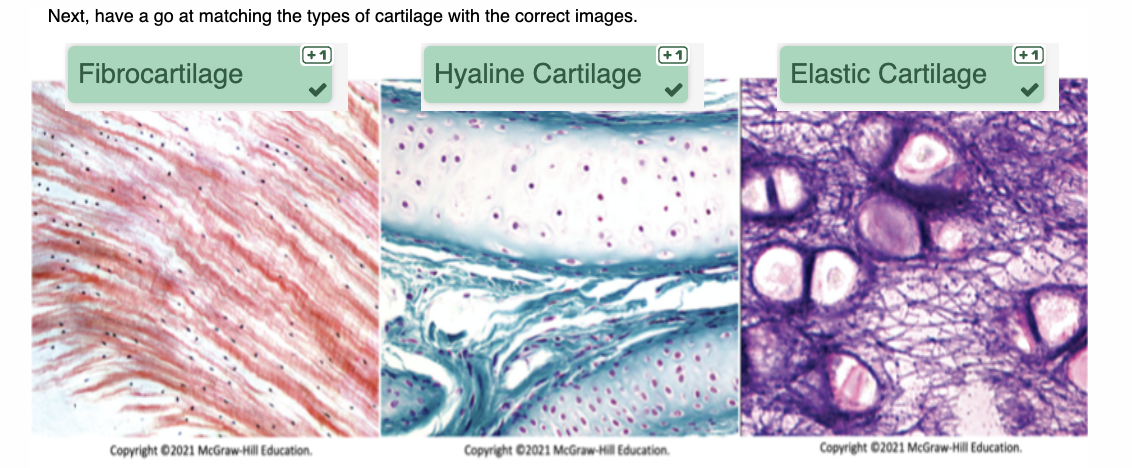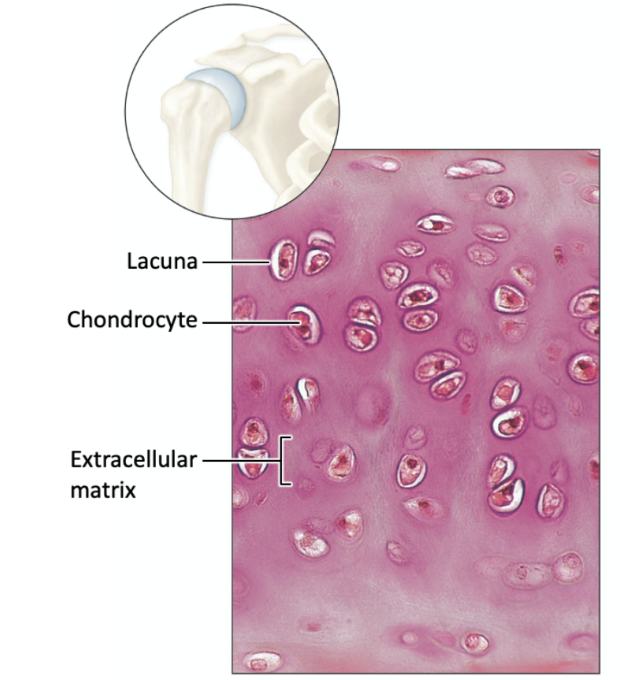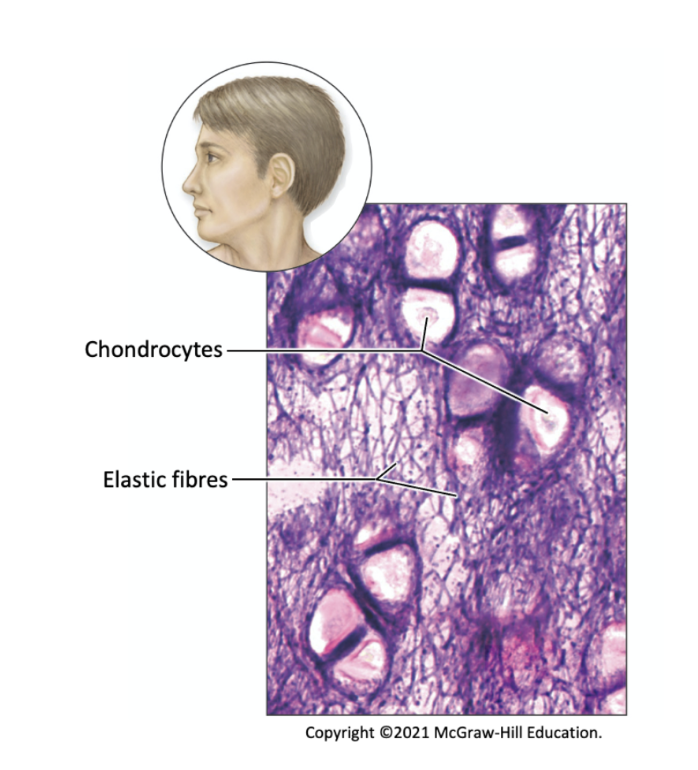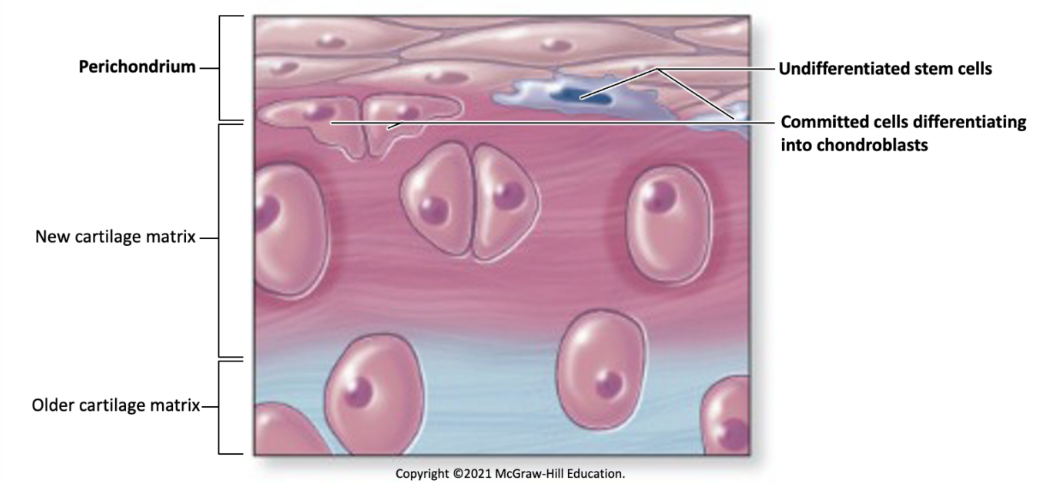Cartilage
Components and Types
Derived from the mesoderm as it is a connective tissue
Includes cells, protein fibres and ground substance (the extracellular matrix).
The ground substance is semisolid and with different protein fibres depending on the type of cartilage.
Contain chondroblasts and chondrocytes (‘chondro’ = cartilage).
Chondroblast: Immature cartilage cells (‘blast’ = immature cell) derived from stem cells at the surface of the cartilage. They are responsible for producing new cartilage matrix and once they become entrapped in the matrix they produce and become chondrocytes.
Chondrocytes: Mature cartilage cells that occupy small spaces in the cartilage matrix called lacunae and maintain the cartilage matrix.

Hyaline Cartilage
It has a glass-like appearance and supports structures and models bone formations.
The chondrocytes within their lacunae are scattered throughout the cartilage matrix and the collagen fibres are not easily visible.
Located in the respiratory tract (larynx and trachea) and the costal cartilages attached to the ribs (costal = rib).
A specific type of hyaline cartilage called articular cartilage covers the articular surfaces of bones, where it reduces friction between the bones forming the joint.

Fibrocartilage
Interwoven collagen fibres that are visible on histological slides.
The chondrocytes within their lacunae are often arranged in parallel rows between the collagen fibres and there is little ground substance.
Provides strength and acts as a shock absorber.
It is found in the intervertebral discs between adjacent vertebrae in the vertebral column, in the pubic symphysis, which is the pad of cartilage between the two pubic bones, and in the wedge-shaped pads of cartilage in the knee joint called menisci.

Elastic Cartilage
Elastic cartilage contains many interwoven elastic fibres.
The chondrocytes within their lacunae look similar to those in hyaline cartilage on histological slides, but are closely packed together with a meshwork of elastic fibres.
Supports other structures while allowing for flexibility.
For this reason, it is found in the external ear and nose and in the epiglottis of the larynx, which prevents ingested material from entering the airways.

Perichondrium
Tough sheet covering the external surface of cartilage (‘peri’ = around, ‘chondrium’ = cartilage)
Consists of an outer fibrous layer made of dense irregular connective tissue and an inner cellular layer containing cartilage stem cells and chondroblasts.
Protects the cartilage, anchors it to other structures and provides cells for cartilage growth and repair.
Cartilage is avascular, meaning that it lacks blood vessels it receives its blood supply via diffusion from the blood vessels outside the perichondrium.
Fibrocartilage is not covered by perichondrium.
Articular cartilage, a type of hyaline cartilage covering the articular surfaces of bones is not covered by perichondrium either. But all other hyaline cartilages are.

Summary

